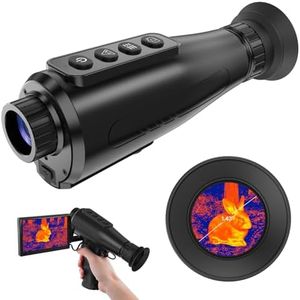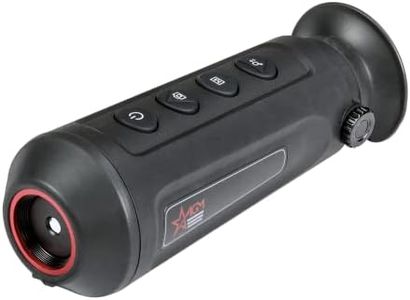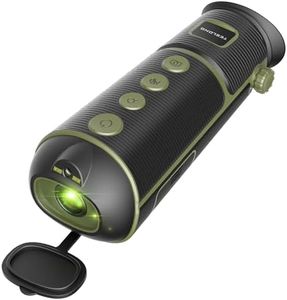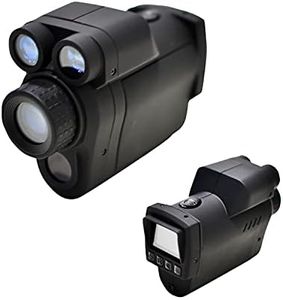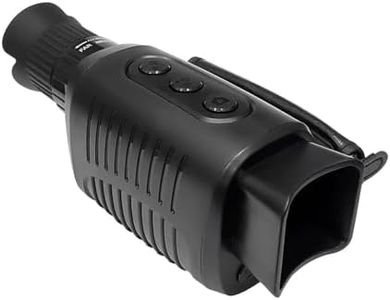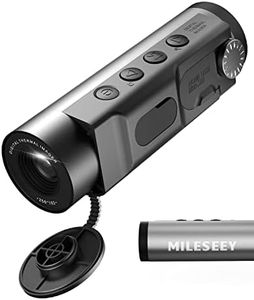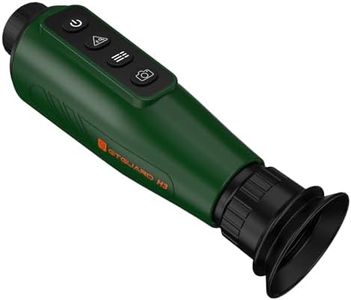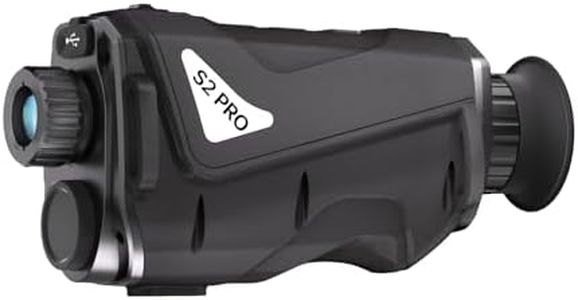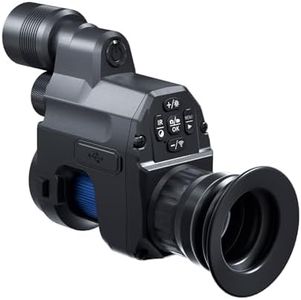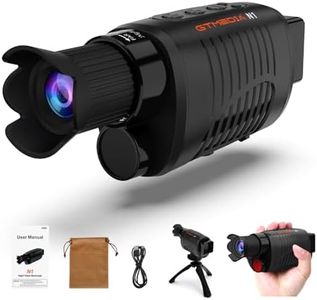We Use CookiesWe use cookies to enhance the security, performance,
functionality and for analytical and promotional activities. By continuing to browse this site you
are agreeing to our privacy policy
10 Best Night Vision Monocular
From leading brands and best sellers available on the web.Buying Guide for the Best Night Vision Monocular
When choosing a night vision monocular, it's important to consider how and where you plan to use it. Night vision monoculars allow you to see in low-light or complete darkness, making them ideal for activities like wildlife observation, camping, security, or navigation at night. Think about the environments you'll be in, the distances you'll need to view, and whether you'll want extra features like photo or video recording. By identifying your primary uses, you can focus on the most relevant features and avoid paying for extras you don’t need.Generation (Gen 1, Gen 2, etc.)The 'generation' refers to the technology level used in the night vision device. Gen 1 is the most basic and widely available, offering decent visibility at an affordable price but usually with lower clarity and range. Gen 2 and above provide brighter, clearer images and longer detection distances but are more expensive and often used by professionals. If you need night vision for casual outdoor activities, Gen 1 may be enough. For clearer images or more demanding uses, consider Gen 2 or higher.
Image ResolutionImage resolution tells you how clear and detailed the picture will be. Higher resolution means objects appear sharper and details are easier to distinguish, which is especially important if you need to identify animals, people, or distant objects. Resolution is usually measured in lines per millimeter (lp/mm) or in pixels for digital versions. If your activities require more detail, prioritize a monocular with higher resolution. For basic navigation or close-range use, lower resolution might suffice.
MagnificationMagnification determines how much closer objects will appear. Monoculars are available with fixed or variable magnification, typically ranging from 1x (no magnification) to 6x or more. Higher magnification can help you see faraway objects, but it may reduce the field of view and brightness. For moving around or scanning wide areas, lower magnification is better. If you plan to observe distant objects while staying in one spot, higher magnification is useful.
Field of ViewField of view indicates how wide an area you can observe at once through the monocular, usually measured in degrees or feet at a certain distance (like 100 yards). A wider field of view allows you to see more of the scene, which is great for tracking movement or scanning large areas. Narrower fields of view are more focused and can be better for long-distance viewing, but make it harder to follow moving objects. Choose based on whether you value seeing a broad area or focusing on something far away.
Infrared IlluminatorMany night vision monoculars include an infrared (IR) illuminator, which acts like a flashlight (invisible to the human eye) to improve visibility in total darkness. Some monoculars have built-in IR, while others require an external one. An IR illuminator is essential if you expect to use your monocular in environments with absolutely no ambient light. If you’re only in low-light situations with some natural light, you might not need strong IR, but for pitch-dark areas, a powerful IR is important.
Battery LifeBattery life measures how long your monocular will function on a single charge or with one set of batteries. Some monoculars use standard batteries while others have rechargeable packs. Longer battery life is valuable if you plan to be outdoors for extended periods with limited access to charging. Shorter battery life may be acceptable for brief or occasional use. Consider your planned outing lengths and whether you can carry spare batteries or have access to charging options.
Durability and Weather ResistanceDurability and weather resistance refer to how well the monocular can handle drops, dust, and moisture. Look for features like rubber armor, waterproof construction, or fog-proofing if you'll use the device in rugged or wet conditions. If your activities are gentle and indoors, these features matter less, but for outdoor adventures, choose a monocular that can withstand tough environments to ensure reliability and longevity.
Weight and SizeWeight and size affect how comfortable and convenient the monocular is to carry and use, especially during long periods or on the move. Lighter, more compact models are easier to transport and operate single-handedly, while heavier, bulkier devices may offer more features but can be cumbersome. Choose a size and weight that matches your comfort level and how you plan to use it—portable for travel, or larger if it will stay mostly in one place.

